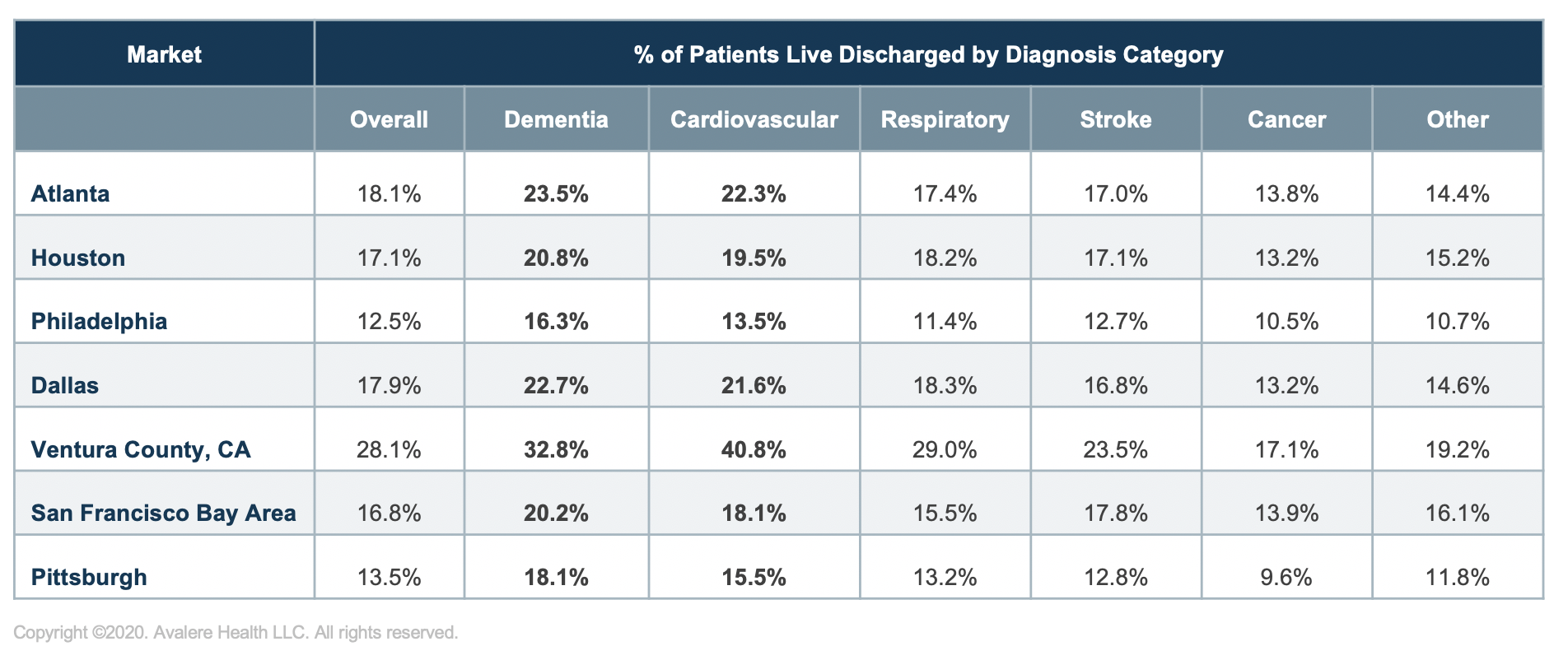Live Discharge Rates for Hospice Patients Vary by Diagnosis
Summary
Avalere’s analysis found that hospice patients diagnosed with cardiovascular and dementia conditions represent the largest proportion of “live discharges” compared to patients with other conditions.The number of Medicare beneficiaries who receive hospice care has steadily increased over time. According to 1 report, approximately 1.5 million Medicare beneficiaries utilized hospice services in 2017, an increase from 1.4 million Medicare beneficiaries in 2016. Medicare hospice benefits cover palliative and support services for patients who have a terminal illness and life expectancy of 6 months or less. However, some beneficiaries are discharged alive from hospice. Such cases are known as “live discharges.”
To better understand live discharge rates among hospice beneficiaries, Avalere examined 7 major urban markets and determined the proportion of Medicare fee-for-service (FFS) beneficiaries by diagnosis who experienced a live discharge.
Avalere’s analysis found that across all 7 markets, beneficiaries with cardiovascular and dementia diagnoses had the highest percentage of live discharges. In the Atlanta market, for example, Avalere’s analysis found that 23.5% of Medicare FFS hospice beneficiaries with dementia had a live discharge and 22.3% of FFS hospice beneficiaries with a cardiovascular diagnosis had a live discharge. This is notably higher than the national average of live discharge rates across all clinical conditions, which was 16.7% in 2017 according to MedPAC’s March 2019 report.

A patient can be discharged alive for a variety of reasons—their health may improve or stabilize to the point where they are no longer considered terminally ill, or they may transition to another care setting. This analysis suggests that patients with dementia and cardiovascular conditions may not follow a predictable path, which in some cases leads to a live discharge despite the patient appearing to be in the final stages of life.
Methodology
Avalere performed this analysis using 100% Medicare Part A, B, and D data, accessed via a research-focused data use agreement with CMS. Avalere identified patients admitted to hospice from January 1, 2017, to February 28, 2019, within 7 markets defined by provider-specific ZIP codes. For the diagnosis category, Avalere used specific ICD-10 codes to define each of the categories. To identify live discharge rates, Avalere identified the percent of patients who were admitted to hospice but were later discharged alive from the hospice setting of care in which they received services.
To receive Avalere updates, connect with us.
Find out the top 2020 healthcare trends to watch.
January 23, 11 AM ET
Learn More



